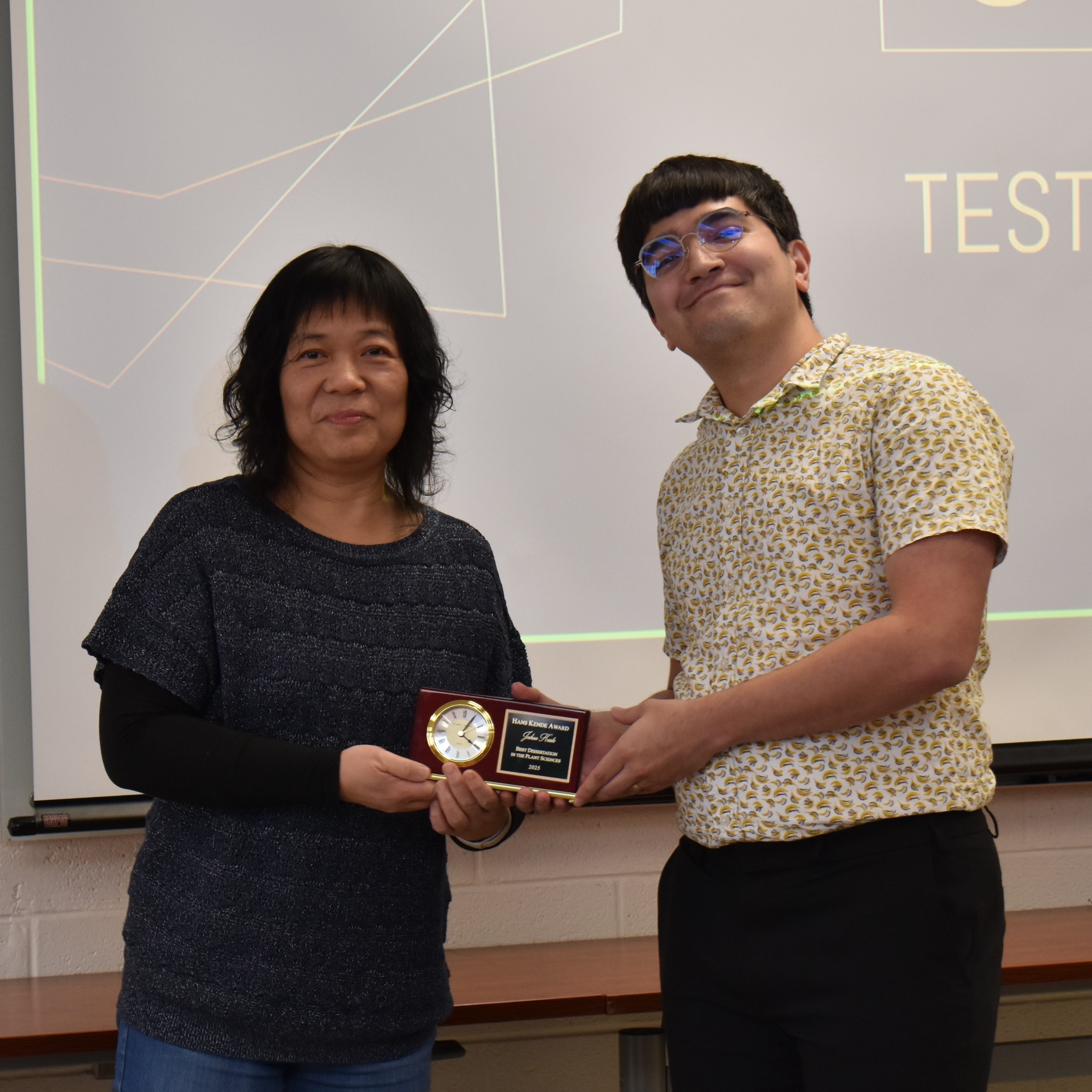How plants tune their greenness to light quality in their surroundings
MSU-DOE Plant Research Laboratory scientists are refining our understanding of how light wavelengths impact how plants develop their chloroplasts.
Chloroplasts are the ‘engines’ of plants. They use light from the sun and carbon dioxide to produce energy compounds, through the process of photosynthesis. Chloroplasts are full of, chlorophyll, a pigment that absorbs sunlight to kick off that process (Chlorophyll is what gives plants their green color).
Scientists know the major players that build chloroplasts and fill them with chlorophyll. But they don't know enough about how a plant's environment can affect this process.
Take light. It has many qualities, like strength of emission or wavelength. Each variable can hinder or improve a plant's health.
"One big aim behind studying chloroplasts, and photosynthesis, is to grow more productive crops. We already know much about the major processes that happen inside a plant. Now, the field is trying to understand the many roles played by a plant's environment. And light is one of many factors that challenge plants daily," says Hussien Alameldin, a post-doc in the lab of Beronda Montgomery.
In a new study, the Montgomery lab examines how far-red light impacts chloroplast development in seedlings. The protein Sigma factor 6 (SIG6), already known to contribute to chloroplast development, plays a big role in these early stages of a plant’s life. The study is published in the American Journal of Botany.
A network of light detectors
Far-red is at the extreme end of the visible light spectrum, just before infra-red. Plants have light-absorbing signaling proteins, called phytochromes, to detect that wavelength.
It turns out too much exposure to far-red is harmful to plants.
"If we expose wild plants to excessive amounts of far-red at an early stage, and then transfer them to normal, white light, they do not 'green.' In other words, the chloroplasts don't accumulate enough chlorophyll pigments and are thus less healthy and productive," says Hussien.
"The phytochromes’ ability to detect far-red somehow leads to this block of 'greening'.”
To understand why, the Montgomery lab tested lab plants under extreme far-red exposure.
They grew mutant plants, each missing a gene related to chloroplast development or light detection. They exposed the plants to far-red light over the first five days of growth– a much higher exposure level compared to plants' experience in nature. The team then transferred the plants back to normal white light to examine how each mutant fared.
Enter the SIG6 protein
"The plants without the SIG6 protein stood out. These plants developed green leaves, even under these extreme conditions. This indicates SIG6 plays a role in regulating this block of greening mechanism," Hussien says.
Next, the science team explored SIG6’s influence on other proteins related to chloroplast development. The mutants lacking SIG6 gene had higher levels of expression of other genes that encode:
- proteins that help accumulate chlorophyll (PORA)
- proteins that play a role in the very last step of chlorophyll production (HEMA1), when exposed to far-red light.
"There are a lot of connections to explore in this network. But we have tried to create a molecular model for SIG6," Hussien says. "SIG6 might work on its own to control the chlorophyll-producing proteins under far-red. As for the connection with the light detecting phytochromes, we are still exploring how that relationship works."
By Igor Houwat, Hussien Alameldin; Banner image of Arabidopsis by Igor Houwat



